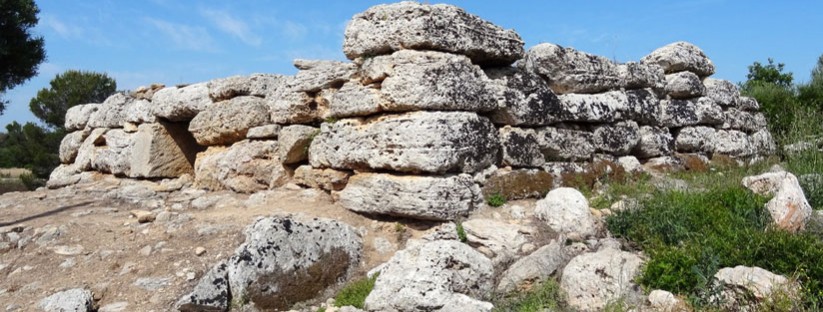Prehistory
Although knowledge of the existence of wine by the inhabitants of this island could be earlier, the first archaeological evidence of the wine trade date back to the fourth century. . BC In the early decades of it, sank in the Bay of Palma Wreck the so-called "Almagro" islet of Sec:
"This ship was carrying a rich cargo of wine, fine ceramics, artistic copper and bronze cauldrons, grain mills .. (sic). It is likely that this sector appropriate Carthaginian Sicily and as noted transporting wine from diverse backgrounds, as is clear from the great typological variety of amphorae carrying on board. So far we classified 16 types sud-Italic, 8 Rhodians and three 'Punic'. Many of these amphorae were containers for 'resinous' wines as they present a layer bituminous, divided by the inner wall of the amphora. PLINIO gives us the recipe for this resin in Roman times, it was the property of preserving the wine, let the porous waterproof clay amphora and give the wine that taste of resin so comfortable today the inhabitants of modern Greece. with the above amphorae, apracecen giant crocks (Pithoi) which placed in fixed place to ferment wines served. "(Cerdá, D. 1978, Mallorca History, Volume II, pp. 1-32)
In those times, Sicily was divided into two halves: the western, dominated by the Carthaginians, and the eastern occupied by the Greeks, as a result of colonial expansion began in the eighth century. JC. For two centuries, the two communities maintained struggles that have been linked to competition trade in wine and oil. The wine in amphorae could come not only from Sicily, but also on the island of Rhodes, Greece; with whom Sicily maintained trade relations. This would explain the typological variety of amphorae found. The existence of giant crocks, called Pithoi raises the unknown that were imported for use as fermentation tanks; implying the existence of vineyards in Mallorca in the fourth century. of J. C.
Also the fourth century. of J. C. dating the wreck found on the neighboring island of Cabrera, with a cargo of wine, pottery and lead ingots. Surely it is remains of Phoenician-Carthaginian trade since all amphorae found were 'Punic'.
Marine archaeological sites belonging to the third and second centuries. of J. C. show that in Mallorca import trade of wine and ceramics is preferably performed with the Italian peninsula, the island of Rhodes and the Greek cities of southern France.

